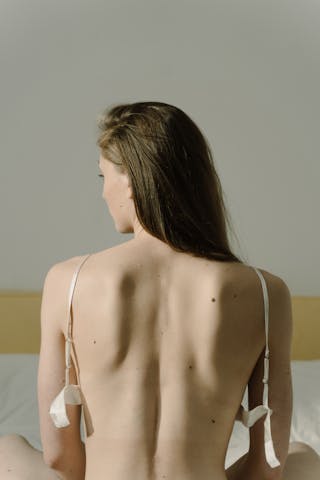The Slow Fade in Dating: What It Is and How to Navigate It
So, you've been seeing someone for a while, but things have started to feel a little...fuzzy. It's like they're slowly slipping away, and you're not quite sure where you stand. Navigating the gray areas of dating can be tough, but it's important to understand what's happening and how to handle it. If you're finding yourself in this situation, check out some great advice on navigating dating's gray areas. It's always helpful to have a little guidance in these tricky situations.
In the world of modern dating, there are countless ways that a potential relationship can fizzle out. One of the most common, yet often misunderstood, is the slow fade. This phenomenon occurs when one person gradually withdraws from communication and intimacy with their romantic partner, ultimately leading to the end of the relationship. In this article, we will explore what the slow fade is, why it happens, and how to navigate it if you find yourself on the receiving end.
If you're looking for a new and exciting way to explore adult entertainment, you should definitely try out these voiced porn games - you won't be disappointed!
Understanding the Slow Fade
Unleash your inner dominance and submissive desires with BDSM slapping - try it out now!
The slow fade is a subtle form of emotional withdrawal that can be difficult to detect at first. Unlike a sudden breakup or confrontation, the slow fade involves a gradual decrease in communication, affection, and commitment. This can manifest in many ways, such as taking longer to respond to texts or calls, canceling plans more frequently, and showing less interest in spending time together. Over time, these small signs can add up to a significant shift in the dynamics of the relationship.
Learn helpful tips for couples interested in exploring threesomes
Why It Happens
There are a variety of reasons why someone might choose to initiate a slow fade in a relationship. In some cases, it may be a result of conflicting feelings or uncertainty about the future. Other times, it could be a way for someone to avoid confrontation or difficult conversations. Additionally, the slow fade may be a sign that the person is no longer invested in the relationship and is looking for a way out without having to explicitly end things.
Navigating the Slow Fade
If you find yourself on the receiving end of a slow fade, it can be a confusing and emotional experience. It's important to remember that this behavior is a reflection of the other person's feelings and choices, and not a reflection of your worth or value. Instead of trying to force the other person to communicate or commit, it's important to focus on your own well-being and boundaries.
One strategy for navigating the slow fade is to have an open and honest conversation with the other person about your concerns. This can provide clarity and closure, and may even lead to a resolution or recommitment to the relationship. However, it's important to be prepared for the possibility that the other person may not be receptive to this conversation or may not be willing to change their behavior.
Another important aspect of navigating the slow fade is to prioritize self-care and surround yourself with supportive friends and family. This can help you maintain your emotional well-being and perspective, and can provide a source of comfort and validation during this difficult time.
Moving Forward
Ultimately, the slow fade is a challenging and painful experience, but it can also be an opportunity for growth and self-discovery. As you navigate this process, it's important to reflect on what you want and need in a relationship, and to consider how you can use this experience to set healthier boundaries and expectations in the future.
Whether the slow fade leads to a resolution or the end of the relationship, it's important to approach the situation with compassion and self-respect. By prioritizing your own well-being and growth, you can emerge from this experience stronger and more empowered in your future relationships.
- https://dating-chat-room.getweps.com/
- https://singles-chat.getweps.com/posts/exciting-sex-how-to-keep-your-sex-life-exciting/
- https://sex-app.thehottieandthenottie.com/posts/kristen-stewart-on-the-huge-responsibility-she-felt-to-define-her-sexuality/
- https://online-hookup.getweps.com/posts/tinder-launches-a-collection-of-healthy-dating-guides/
- https://hookup.getweps.com/posts/chrishells-breakup-shows-the-need-for-shared-relationship-goals/
- https://dating.campsupernow.com/posts/lesbian-wedding-planning-advice-and-tips-samesex-lgbtq-weddings/
- https://hookup.timebombrecordings.com/posts/11-things-you-need-to-know-about-period-sex/
- https://free-dating-website.campsupernow.com/posts/anal-sex-what-does-anal-feel-like/
- https://sex-app.campsupernow.com/posts/my-best-sex-ever-was-with-my-exs-best-friend/
- https://hookupsites.getweps.com/posts/how-to-give-an-erotic-sexy-massage/
- https://find-a-girlfriend.getweps.com/posts/greysexual-what-does-greysexual-mean/
- https://local-personals.timebombrecordings.com/posts/what-your-sex-life-would-look-like-in-a-spotify-yearly-wrap-up/
- https://location-dating.thehottieandthenottie.com/posts/best-oral-sex-tips-and-blow-job-tips-for-him-and-her-ex-tips/
- https://dating-blog.ua-sex.com/posts/how-to-come-at-home-for-christmas-expert-sex-tips-for-the-holidays/
